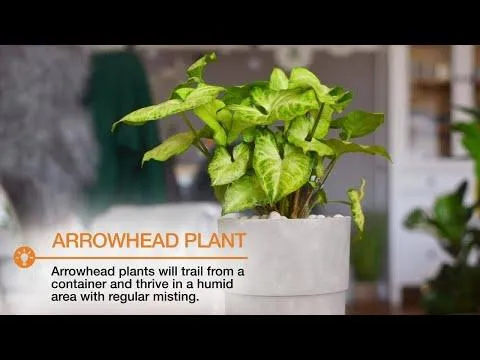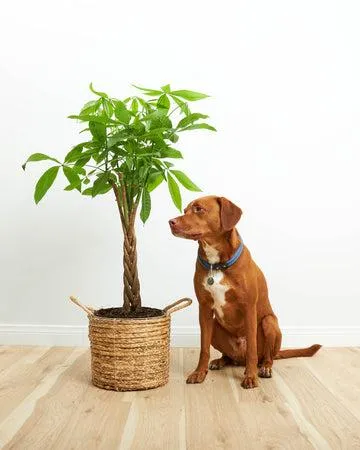All You Need to Know About Low-Maintenance Indoor Trees
If you want the beauty and greenery of houseplants but don’t have a green thumb, indoor trees that are easy to care for may be the solution. From my experience as an indoor plant enthusiast, low-maintenance trees can add life to a home without a lot of fuss. In this article, I’ll cover everything you need to know to choose and care for indoor trees that thrive with minimal effort.
Best Easy Care Tree Options
Here are some of the top tree varieties that are very forgiving of the occasional misstep in their care:
- Money tree (Pachira aquatica) – With its braided trunk and rounded leaves, the money tree is basically impossible to kill. It does well in low to medium light and only needs water when the soil is dry.
- Rubber tree (Ficus elastica) – As the name suggests, rubber trees are rubbery and resilient. They tolerate low light andinfrequent watering well. Use a pebble tray to boost humidity.
- Dracaena marginata – Nicknamed the “Madagascar dragon tree,” this tall, upright plant is very hardy. Its thin, arching leaves hold up well against neglect.
- Jade plant (Crassula ovata) – Resembling a miniature tree, jade tolerates underwatering better than overwatering. Give it bright light and forget it for weeks at a time.
Tips for Low-Maintenance Tree Care
While these trees are forgiving, following a few basic care practices will keep them thriving:
- Water when the top inch of soil is dry. Err on the side of underwatering rather than overwatering, which tends to cause issues.
- Place trees in medium to bright, indirect light. Direct sun can sunburn some varieties. East- or west-facing windows are usually perfect.
- Check leaves periodically for pests like spider mites orscale. Routinely wipe leaves with a damp cloth to prevent buildup of dust.
- Repot only when roots have filled the container. Repotting frequency depends on tree size but it’s usually every 2-4 years.
- Provide humidity if the air is very dry by using a pebble tray beneath the container. This protects leaf health over the long run.
Tips for Problem-Free Indoor Trees
Here are some additional tips I’ve picked up that help avoid issues:

- Use a well-draining potting mix, like a general potting soil amended with perlite or bark. Soggy soil easily leads to root rot.
- Check drainage holes on the container bottom haven’t been covered. Good drainage is crucial for tree health.
- Fertilize only in the growing season, spring through fall. Many indoor trees don’t need fertilizer otherwise. Too much can be worse than too little.
- Prune only to shape the tree or remove damaged growth. Over-pruning can shock trees and promote disease issues.Less is more with maintenance pruning.
- Enrich the soil with compost or worm castings occasionally. This replenishes nutrients as trees uptake minerals over time in their containers.
Choosing a Location
Location has a big influence on how maintenance-free your indoor tree will be. Here are some factors to keep in mind for an issue-free spot:
- Avoid places near heating vents, cooling vents, or drafty windows. Temperature fluctuations can stress trees.
- Pick a spot out of reach of pets that may damage or topple the plant.
- Make sure ceiling height is high enough and there’s space for the tree to grow to maturity without problems.
- Consider light levels throughout the year. Some trees need seasonal rotation to avoid sunlight changes causing leaf drop or scorching.
Diseases and Pests
No tree is completely exempt from occasional issues, but here are some common ones and what to do:
– Scale: Check for small, circular bumps on stems or leaves. Wipe with alcohol or treat with insecticidal soap.
– Spider mites: Look for tiny red specks and webbing. Spray plant down with water to remove mites and repeat as needed.

– Powdery mildew: Flour-like coating on leaves. Prune off affected growth and increase air flow/humidity to prevent recurrence.
– Root rot: Leaves yellow/drop due to too wet soil. Improve drainage and trim off mushy roots before repotting in fresh soil.
Prevention through good care practices and monitoring plants regularly for signs of issues helps keep trees healthy indoors. With maintenance mistakes kept to a minimum, they’ll bring long-lasting greenery to your home.
I hope these tips help you choose and care for low-maintenance indoor trees easily! Let me know if you have any other questions.

Easy Care Indoor Trees
| Tree | Water Needs | Light Needs | Size | Other Care Tips |
|---|---|---|---|---|
| Money tree | Water every 1-2 weeks | Bright indirect light | Up to 5 feet tall | Few pests or diseases; trim occasionally |
| Chinese evergreen | Water when top inch of soil is dry | Bright indirect light | Up to 6 feet tall | Prone to spider mites if too dry; propagate from stem cuttings |
| Snake plant | Water every 2-4 weeks | Low light | Up to 3 feet tall | Very tough; toxin to pets if ingested; propagate from offshoots |
| Peace lily | Keep soil moist | Bright indirect light | Up to 3 feet tall | Blooms fragrant white flowers; leaves droop when thirsty; propagate from offshoots |
| Bamboo palm | Water weekly | Medium light | Up to 8 feet tall indoors | Rapid grower, prune as needed; place cachepot in saucer of pebbles and water |
FAQ
-
What types of indoor trees are pretty much easy to care for?
Some indoor tree types that don’t take a ton of work are things like the bamboo palm, money tree, Chinese evergreen, and dwarf date palm. These trees basically don’t need as much light or water as others.
-
How often do you have to water an easy care indoor tree?
Most low-maintenance indoor trees only need water when the soil gets dry. You can check the soil by sticking your finger in it – if it feels damp, you’re good. But if it’s dry about 1 inch down, it’s time to water. So on average, watering every 7-10 days is usually enough for an easy tree.
-
Do they need direct sunlight?
While indoor trees appreciate some sunlight, too much can burn their leaves. The types that are considered effortless to look after generally do well in medium to low light. Places like east-facing windows or a few feet from a south-facing one provide suitable light for easy care trees. Direct western sun might be too powerful.
-
How does the size of an indoor tree impact its care needs?
Larger trees, unsurprisingly, tend to need more frequent watering and possibly fertilizing than miniature varieties. Bigger plants also suck up extra sunlight compared to small ones. So dwarf or compact forms of trees like ficus or palms are in many ways easier to manage space-wise and care-wise than their full-sized kin.

-
What kind of maintenance is required besides watering?
Occasionally checking trees for pests and signs of disease is wise. Many indoor varieties also enjoy yearly fertilizing during the spring and summer growing seasons. Pruning may sometimes be necessary to keep trees shapely. Otherwise, not a whole lot more than water is usually necessary for the simpler indoor tree types.
-
Could an indoor tree actually improve air quality?
Potentially yes! Certain trees are known to take in carbon dioxide and release oxygen, plus some can apparently absorb chemicals like formaldehyde, benzene, and trichloroethylene from the air. Spider plants, bamboo palms, and English ivy appear to be decent air-purifying indoor plants. So an easy care tree might make the air in your home potentially better, or at least not worse.
-
What is the least demanding indoor tree species?
The Chinese evergreen and bamboo palm may require the smallest amount of effort to keep happy and healthy long term. They basically just need occasional water and can survive in lower light than most trees. Snake plants and pothos vines also are believed to be among the simplest to look after indoors. These options could perhaps appeal to people with busier schedules or black thumbs.
